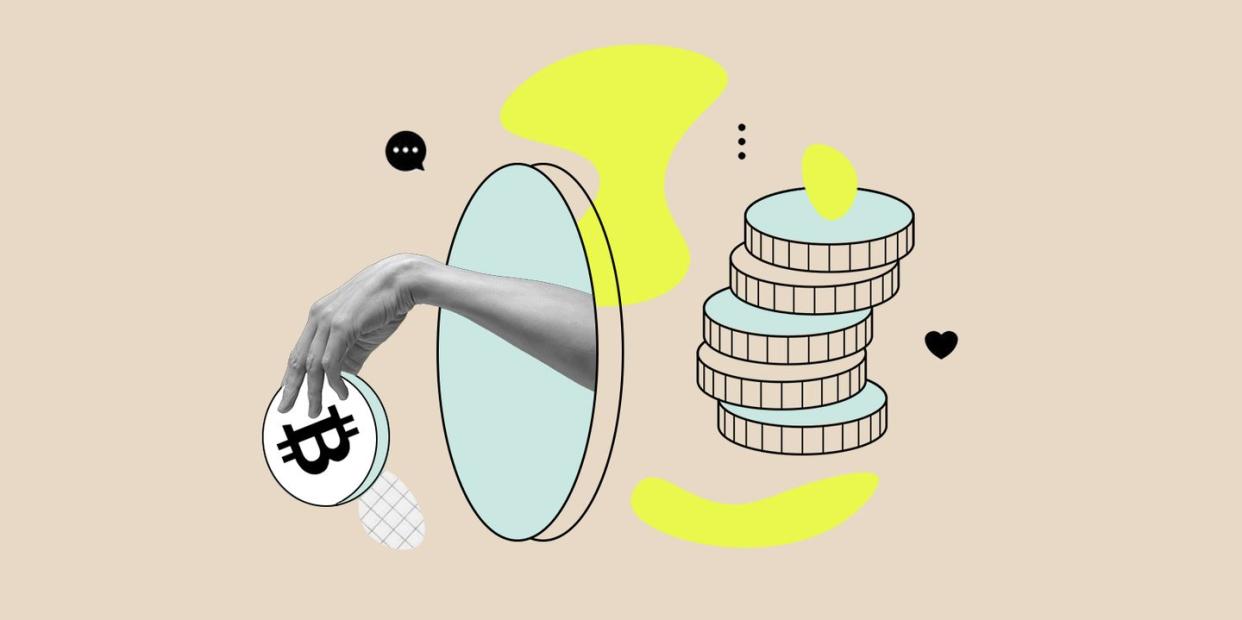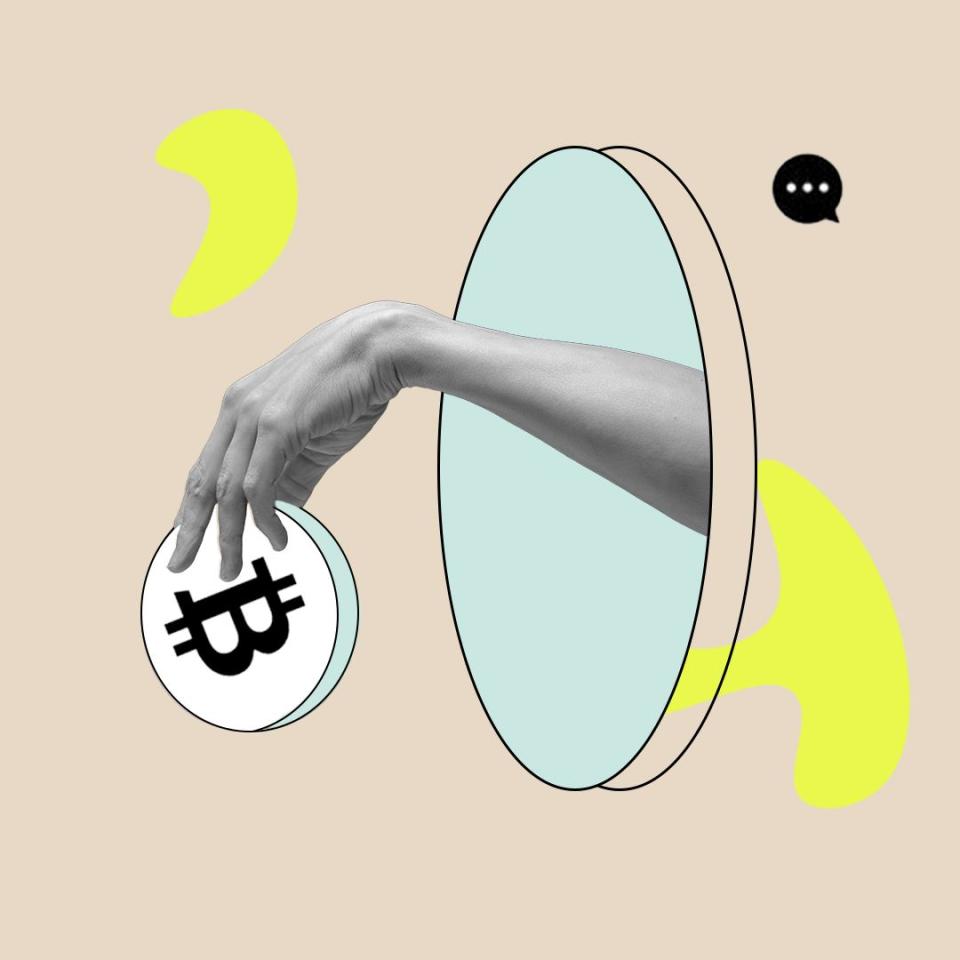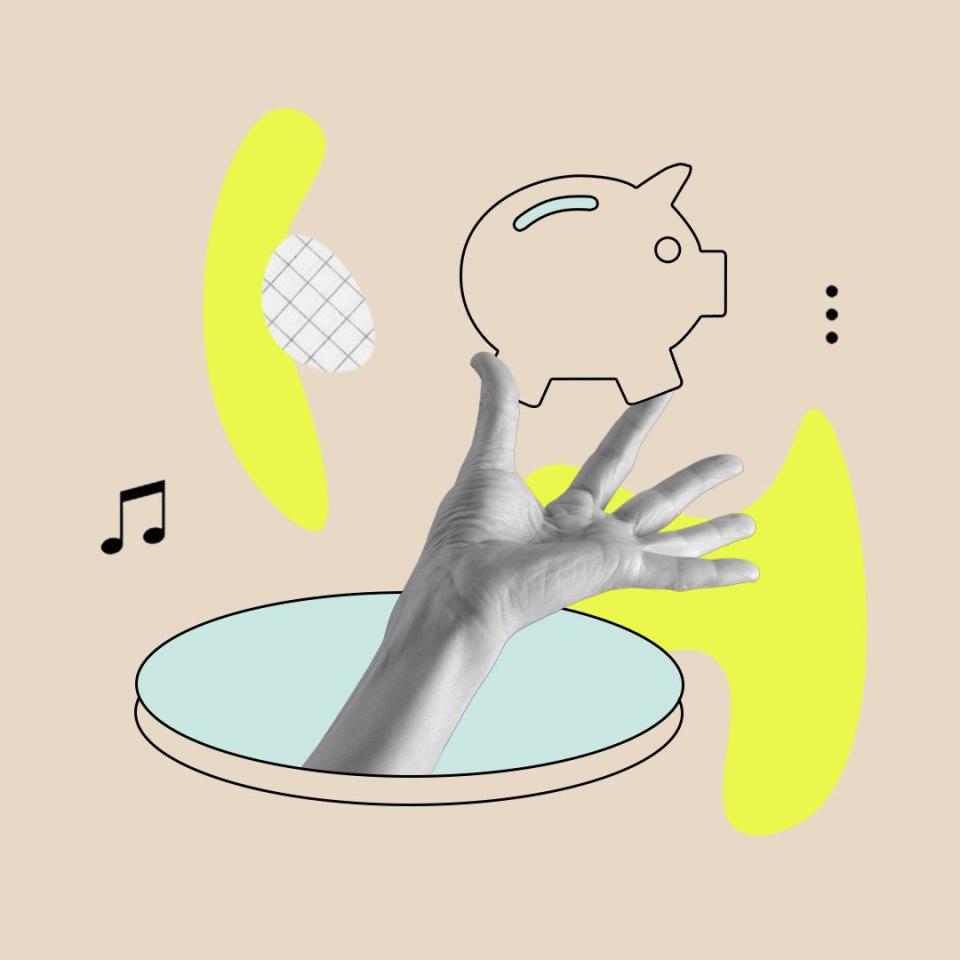The rise of the “fin-fluencers” promising to make you rich

A woman wearing a cerise pink dress sits at a desk. Her backdrop a crisp white wall, a generic piece of artwork peeks into shot. 'Pocket Rocket’ by Cochise plays, as the following text appears: *Aged 18-40. How to make 100K with no experience.*
She’s giving off major aspirational vibes as she points to different suggestions popping up around her – in time to the music, of course. It’s a TikTok video, after all. First it’s ‘stripper’ (spelled ‘skripper’, presumably to foil TikTok’s filter). It’s a ‘no’, indicated by red cross emojis. Then ‘Only Fan$’, also ‘no’. But it’s a ‘yes’ to ‘Affiliate Marketing’ and ‘Trading and Investing’. Hashtags are things like #bossbabe, #girlswhotrade and #affiliate. And just to reiterate, you can’t be over 40.
Viewers must then DM this woman (whose Insta stories are full of her with other glamorous women on cocktail-filled nights out) to find out how to make this £100K. This suggests that she’s promoting a product or service – or some variation of an MLM model. And it’s tempting… For a second, before common sense kicks in.
The fin-fluencers dishing out advice on TikTok
The number of clips like this on social media are growing. Search #investing, #crypto or #personalfinance on TikTok, and millions of videos, with billions of views, pop up. Instagram is filled with millions of financial hashtags. Financial influencers are so popular they have their own name: ‘Fin-fluencers.’ You can find them sharing messages ranging from sensible (‘invest every pay day’) to ridiculous ('buy lots of Bitcoin'). And when I jump into the worlds of ‘fin-tok’ and ‘fin-stagram’, one thing becomes clear: these accounts aren’t all equal. There’s plenty of bad, and downright dangerous, information out there. But, there’s also a lot of good, you just have to find, and recognise, it.
Verena Hallam, 32, is an SEO consultant from Lancaster. At 23, after five years of living paycheque-to-paycheque, she’d racked up £13k of loans – which also happened to be her annual wage at the time. When she was 18, she’d been offered a credit card from her bank, she used it to cover her basic living costs and spend beyond her means on make-up and clothes. “I did a lot of emotional spending,” she admits. “My minimum wage retail job was never going to be enough to pay it back.”
Verena found advice on social media and used various platforms to educate herself, first of all in saving – and later in investing. Accounts including the.brokegeneration and the.moneyminimalist were helpful for budgeting, and she recommends Delyanne the Money Coach for tips on how to make your money work hard for you. Verena paid off her debt in 2020. Her total payments came to over £30,000 due to interest rates and additional borrowing. Over that time, she utilised various apps that helped her make extra money: HuYu (which scans your receipts and rewards you with points) and BeMyEye (for mystery shopping assignments). She says she ‘gamified’ paying off her debt, to get the same buzz she used to get from spending.

Now, with the help of what she’s learned, she invests regularly in a pension and a Stocks and Shares ISA (a bank account that sees your savings invested into the stock market, meaning that you can make money on the – hopefully – growing balance), both of which she’s seen profits on. She also passes her own advice on to her followers on her Instagram account SurvivingToSaving.
But Verena warns of the ‘get rich quick’ content, saying that "it's appealing to the people who need money, rather than the people who have it." And, as Verena knows only too well, being in debt and out of control can take you to a dark place…
The good and the bad
There are two main different types of content creators. Those that promote a high-flying lifestyle, encouraging followers to get involved in ‘day trading’ (betting on the short-term price movement of a stock on any given day, buying and selling before the day is out), pointing followers to invest their money into single company stocks (a high risk strategy as your eggs are literally in one basket), promoting cryptocurrencies and NFTs (‘non-fungible tokens’ – aka one-of-a-kind digital art sold via the blockchain), and trading in things like Forex (high-risk foreign currency, that requires a level of market expertise, despite what certain TikTokers would have you believe).
Then, there are the more risk-averse accounts – like the ones Verena discovered – with a focus on long-term investing. Accounts helping people get out of debt and deal with the ever increasing cost of living.
The influencers who run the latter accounts are sharing information gained through their own research. They’re promoting things like overpaying on your pension, or investing in ISAs. This long-term investing might sound less glam, but it’s also less likely to see you lose your life savings.

The dark side of the fin-fluencer
Despite the fact that some are better avoided, one thing’s clear: The audience for this content is growing. Research from Barclays found that an increasing number of 18-24 year olds are hooked on finding new ways to make money by investing. Around one in six of this age group invested for the first time between May 2020 and May 2021 – and over 50% followed advice from social media.
However, for Ada Powers this didn’t end well. The-36-year-old content strategist from Essex invested in Ethereum, a type of cryptocurrency, after being informed by several accounts that it was the next best thing after Bitcoin, which – at that point – had already peaked. “I wouldn’t have found out about Ethereum without social media,” Ada says. “But the way that social media works, you’re exposed to certain types of opinions, rather than the full picture. It’s a bubble.”
Going by advice on Twitter, Ada put £700 into Ethereum. She’s since watched her “investment” lose £100-£200 per month. It’s now sitting at £271. Ada decided to leave the money in there, just in case things picked up. “I thought if I took it out, it would be a confirmed loss.” She now hugely regrets taking advice from social media, and that the repeated exposure to the information heavily influenced her decision.
Given that places like Twitter and Tik Tok are more accessible than the traditional routes into investing, it’s hardly surprising people get sucked in. Dr Daria Kuss, Associate Professor in Psychology at Nottingham Trent University, specialises in Cyberpsychology. “People use social media for financial advice because it’s a natural place for them to be,” she says. Essentially, she says it’s a more ‘sexy’ way of starting to understand investing. “And the more relatable an influencer is, the more likely it is they’ll be followed,” she says.
Dr Dominik Piehlmaier, a lecturer in marketing at the University of Sussex Business School, whose research is on consumer financial decision-making, agrees that people trust influencers because there’s an element of familiarity, or because they have a life they want. However, “this isn’t necessarily a good thing. These ‘gurus’ draw people in by sounding confident. But some of the products they recommend can be dangerous.” Dr Piehlmaier explains that expressions of overconfidence lead followers to believe individuals are knowledgeable. “But it’s perception,” he explains. This confidence leads to more followers, making them appear credible, which means people take bigger risks. “And yes, it can go wrong,” he warns

The rise of female investors
Increasingly, a number of accounts are targeted at women, to counter the ‘finance-bro’ culture of TikTok (super hyped-up men, promising insane returns on various investments). The female creators are united in attempting to address the investment gap – which, according to findings from research firm Kantar, shows the value of investments held by women aged between 21 and 53 is just half that of men in the same age group.
Natasha Simms, 28, from Birmingham, set up her Instagram account, InvestingForGirls, after working in finance and realising there isn’t enough information tailored to women. “I'm not trying to sell a lifestyle,” she says. “I want to teach people about something that’s important. But it’s up to them to do their own research.” Like many influencers, Natasha puts a *disclaimer* on her posts, stating that it’s not ‘advice’. However, she agrees that the line is sometimes blurry. Dr Piehlmaier thinks it’s a grey area. “Just because you don’t explicitly tell someone to do something, doesn’t mean they won’t be influenced by it.”
And look, there is money to be made. Suzy Duarte is an operations manager based in the US. She’s taken advice from Instagram, and credits part of her success to a coaching session with financial influencer, Leeandra Peters, aka Female in Finance. Suzy now invests weekly and her money is growing. In just eight months she’s made around $40k profit, by investing in Index Funds (a grouping of funds, rather than just investing in one company) and her 401k (the American equivalent of a pension).
And there’s lots of women like Suzy. Many have even been inspired to set up their own accounts. Simran Kullar (aka MissPersonalFinance), who’s 25, started spending more time – and money – on investing in the midst of the pandemic. The council worker from London began her journey by putting £20 into an investment account, to allow her to invest in stocks and ‘funds’ (so rather than investing in an individual company, the investor puts their money into a group of companies, aka the fund). Now, Simran has an investment total of £70,000, made up from a combination of savings and profits from investing.
Red flags
The most important thing to keep in mind? Never take any 'advice' on social media at face value. There’s a lot of information out there. And lots of influencers promising overnight riches, crypto scams, copycat fake accounts, and MLM schemes. These can be difficult to spot when people who seem credible are urging their followers to get involved. Even Kim Kardashian is being sued for promoting a crypto ‘pump and dump’ scam on her Instagram (a ‘manipulative scheme that attempts to boost the price of a stock or security through fake recommendations,’ according to Investopedia).
So look out for the red flags. Any accounts that are offering miss-spelled versions of popular accounts or offering to give away free money are classic tell-tale signs. If it feels too good to be true, guess what, it probably is. “Don’t trust anyone promising you a ‘get rich quick’ scheme,” says Dominik. Even if it’s Kim K. “And if someone claims to make double the money for a fraction of the work? If it was that easy, everyone would be doing it.”
You Might Also Like


